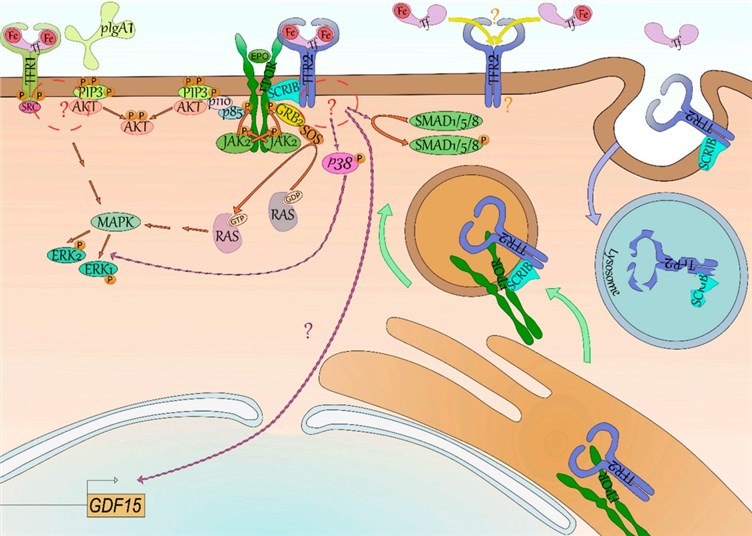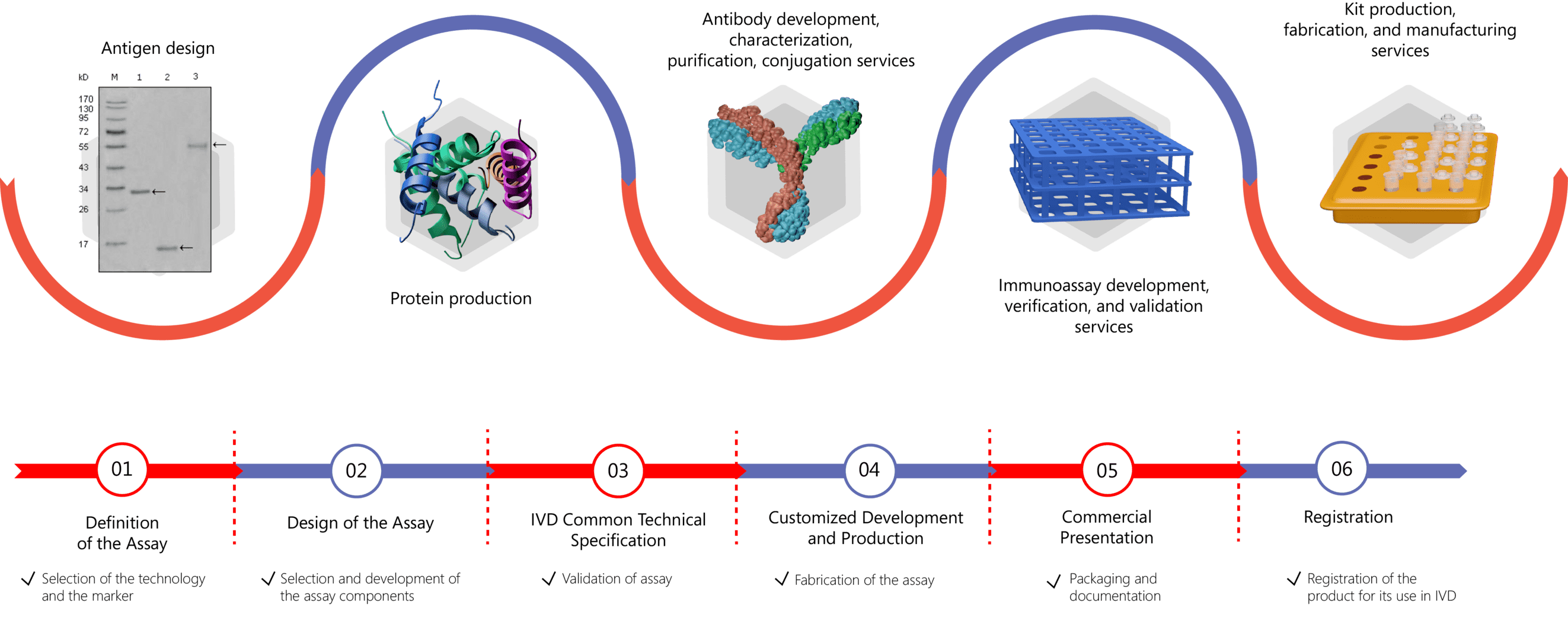Biomarkers are essential tools for disease diagnosis, monitoring, stratification, and therapy response prediction. In vitro diagnostic (IVD) tools that are developed targeting reliable biomarkers could greatly help with these issues. As a leading service provider for antibody and immunoassay development, Creative Biolabs is offering high-quality IVD antibody and immunoassay development services for different disease biomarkers, such as transferrin (TF).
Introduction to TF
TF is a 76-kDa glycoprotein that is mainly produced in the liver and has a half-life of approximately 8 days in the serum. Consisting of two lobes at the N- and C-termini, TF plays a key role in the delivery of iron from dietary absorption and macrophage recycling to utilizing cells that internalize the TF-bound iron through transferrin receptor 1 (TFR1). In addition to TFR1, a second transferrin receptor, TFR2 which binds the iron-loaded TF with a lower affinity than TFR1, also exists. TFR2 has a regulatory function in the liver and in the erythroid compartment. Under physiological conditions, almost all iron in the circulation is bound to TF. However, in diseases resulting in iron overload, TF is saturated with iron, and excess iron is present in the plasma as non-TF-bound iron (NTBI). The exact route of uptake of NTBI remains unclear, but it is well established that NTBI is responsible for parenchymal cell iron overload.
 Fig.1 Signaling of the transferrin receptors.1
Fig.1 Signaling of the transferrin receptors.1
TF as A Biomarker for Systemic Lupus Erythematosus (SLE)
SLE is arguably the most serologically and clinically diverse autoimmune disease, with immunopathogenic abnormalities continuously being uncovered and clinical manifestations widely varying in individual patients. Owing to its complex nature, SLE remains one of the greatest challenges to both investigators and physicians. Over the past several decades, tremendous enthusiasm and efforts have been devoted to discovering reliable lupus biomarkers for diagnosis, monitoring, and prediction of response to therapy. Recently, many clinical investigations suggest that the levels of TF in serum and urine are elevated significantly as compared to controls. What’s more, increased TF levels are correlated with the inflammatory state of the patients and anemia of chronic disease. In this condition, TF can be treated as a potential marker for the diagnosis of SLE.
IVD Antibody & Immunoassay Development Services Provided by Creative Biolabs
Creative Biolabs has extensive experience in the whole process of diagnostic and method development, with expertise in antigen design, antibody generation, recombinant protein expression, and a wide range of immunodiagnostic technology platforms. We can work with our clients to develop assays to meet their exact requirements. We offer a full start to finish service, including but not limited to:
- IVD Antibody Development
- Antibody Pair Development
- Antibody& Protein Conjugation
- IVD Immunoassay Development

If you are interested in our services, contact us for more information.
Reference
- Richard, Cyrielle, and Frédérique Verdier. "Transferrin receptors in erythropoiesis." International journal of molecular sciences 21.24 (2020): 9713. Distributed under Open Access license CC BY 4.0, without modification.
For Research Use Only.

